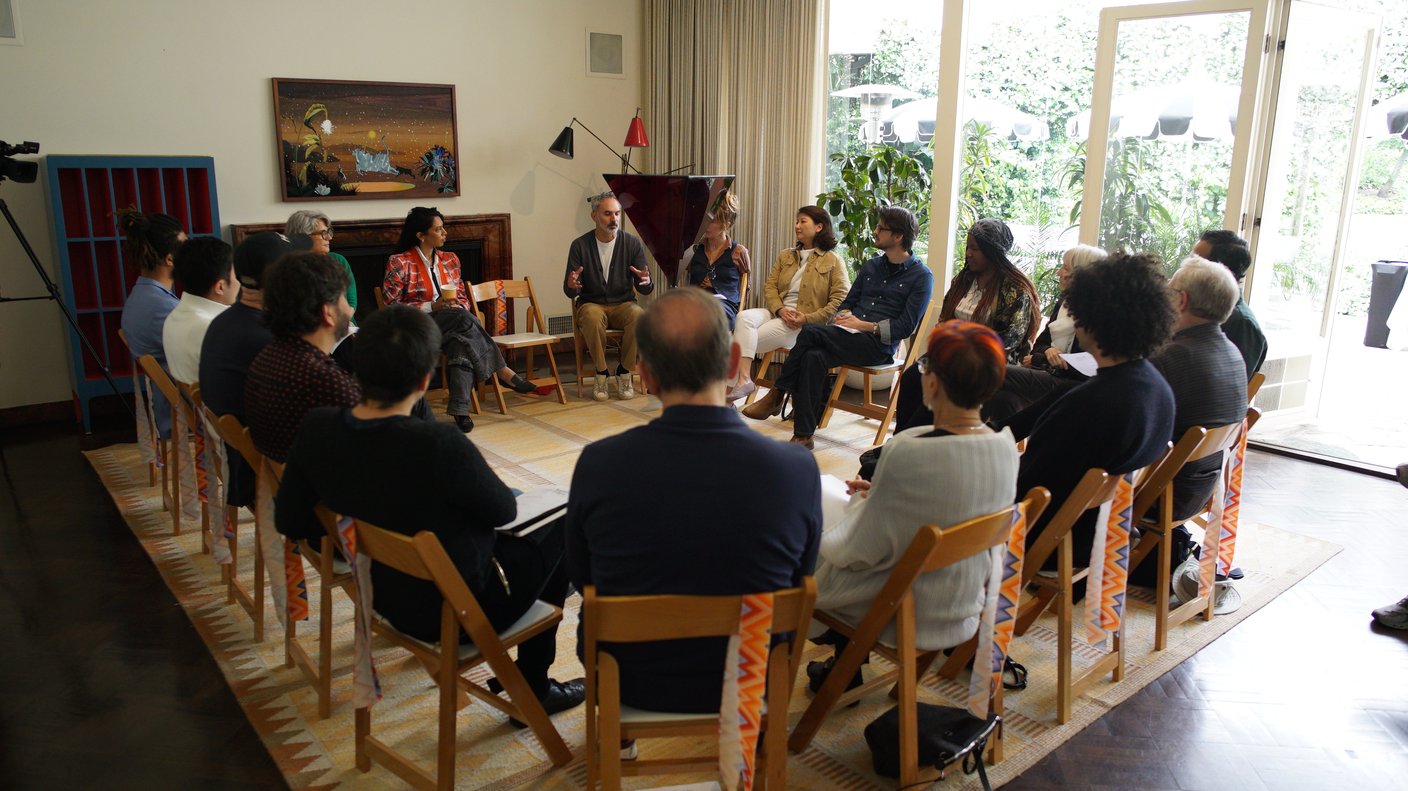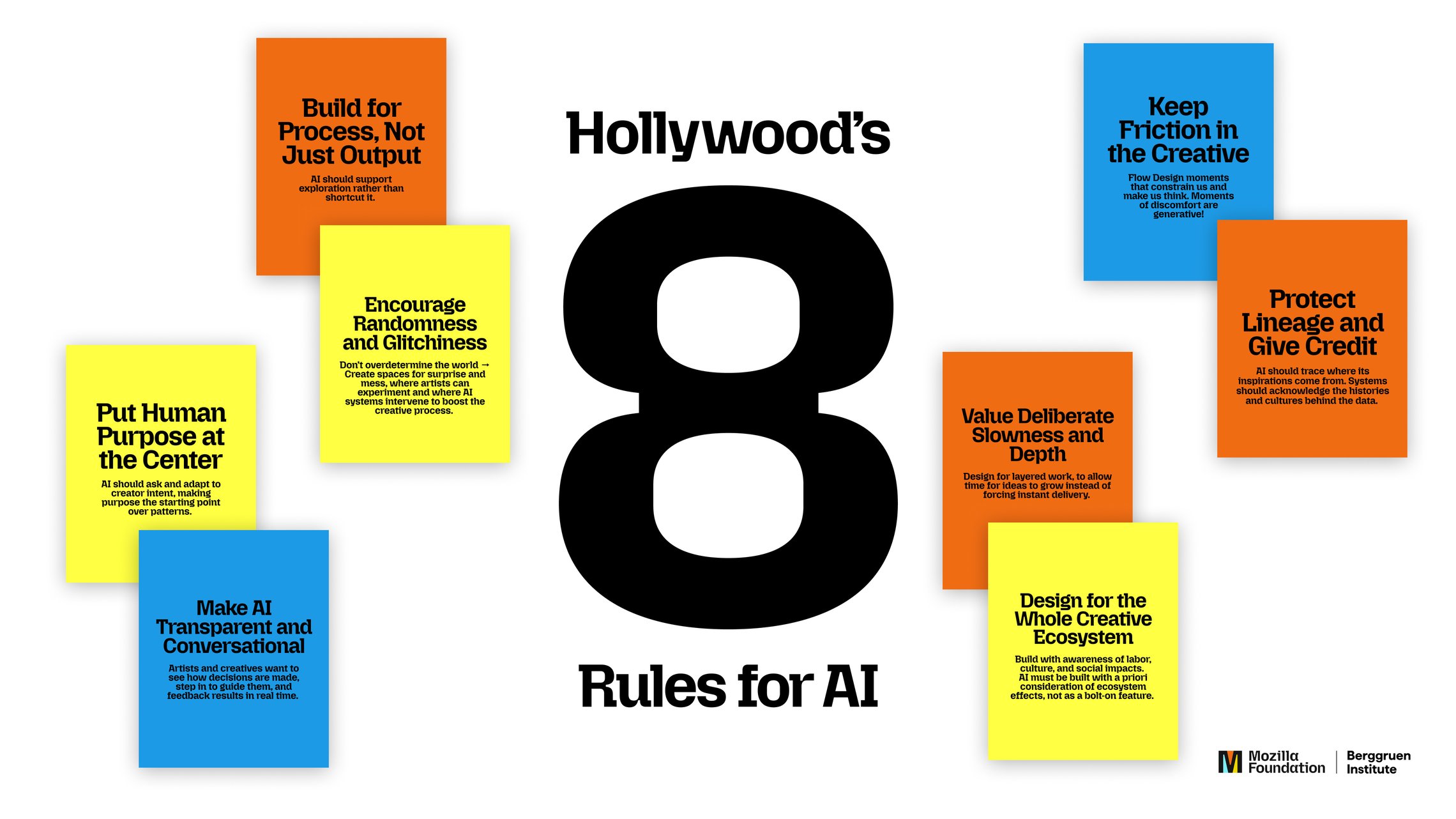Imaginative Intelligences - Hollywood & AI

The Imaginative Intelligences Assemblies, hosted by Mozilla Foundation and the Berggruen Institute in early 2025, brought together 91 creatives, technologists, and thinkers to ask: What is creative purpose in the age of AI?
Held at the Bradbury Building and the historic Hearst Estate, the Imaginative Assemblies used blindfolded deep-listening, tactile modeling, and facilitated dialogue to probe this central question. This process collected 30 hours of audio (18GB), 4,500+ photos (16GB), and 60+ hours of film (6.7TB) across all sessions. The resultant report documents the Assemblies in detail, including its methods, themes, and cross-cutting insights.
The report underscores a simple truth: AI is being built faster than many of us can make sense of—and too often without the input of the people whose livelihoods it threatens. The report distills the insights of the Hollywood creative industries into key statistics and stories highlighting both risks and opportunities as AI reshapes the future of culture. It also proposes 8 Rules as a call to action for building technology that strengthens, rather than erodes, human creativity. Key themes that emerged from the research process included:
The conflicting natures of AI and creativity
- AI accelerates but flattens: AI speeds up creative output but strips away the struggle and discovery that give art depth.
- Simulation ≠ experience: AI can mimic form, but it can’t create from lived memory, pain, or joy.
- AI disrupts value itself: If creation is instant and cheap, what makes it meaningful or worth paying for?
- Friction matters: Speed and convenience are not always good. Struggle, limits, and slow time build meaning.
The impact of AI on the industry
- Artists are shifting roles: More curators, editors, and system designers than original makers.
- Creative labor is under threat: Creative work is increasingly precarious, and most artists feel unrepresented in tech debates.
The way forward
- Systemic design is key: AI is an infrastructure that can either homogenize culture or amplify difference.
- Resistance means redesign: The creative community doesn’t reject AI but wants it rebuilt around human purpose.

The view from Hollywood
Read the full Imaginative Intelligences report
The Imaginative Intelligences report, including Hollywood’s 8 Rules for AI, is a call to action for policymakers, funders, and technologists to ensure AI strengthens, rather than undermines, human imagination and livelihoods.
When making policy around AI this report challenges policymakers, platform owners and industry to think beyond copyright — rules for AI should center on human purpose, sustainable ecosystems, and collective benefit. The ask is not to cease using AI entirely, but to rebuild it with creative process preservation.
How we got here: interactive, participatory research
Across five half-day sessions (12–20 people each), 91 participants from across the creative industries – filmmakers, producers, animators, performers, musicians, composers, technologists, academics, content creators, and storytellers – engaged in facilitated dialogue and hands-on modeling using the Creative Assembly approach.
Developed at MIT and perfected in LA, the Creative Assembly is a 6-hour participatory, interactive cultural technology that enables diverse groups of people from varied backgrounds and abilities to identify, metabolize and express common yet complex situations through narrative thinking, deep listening, design management and manufacturing, and artistic visualization.
